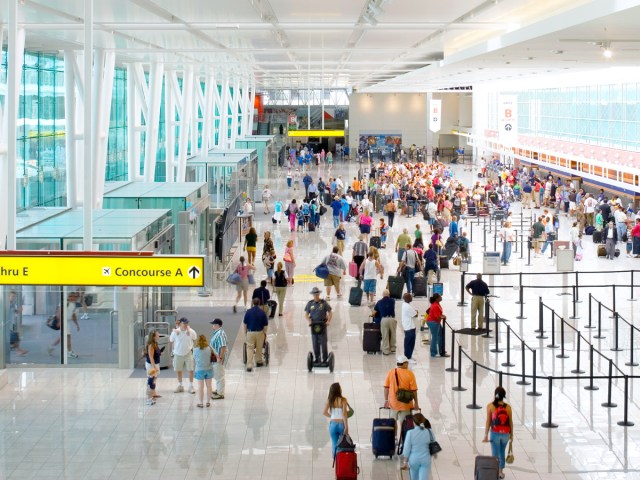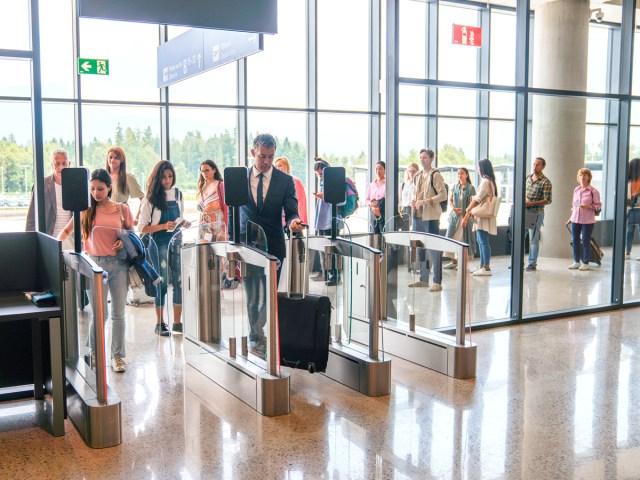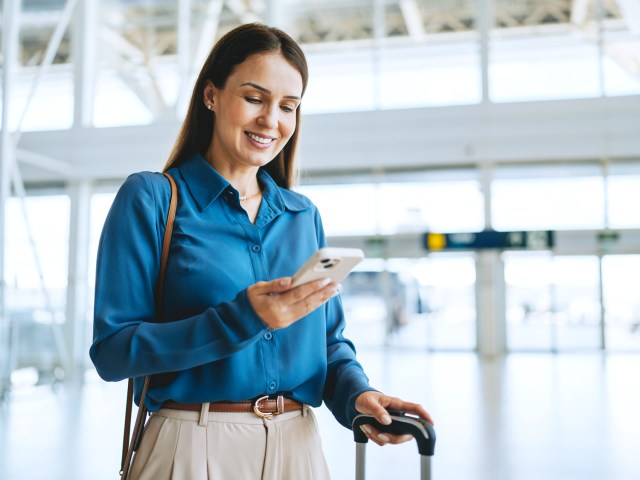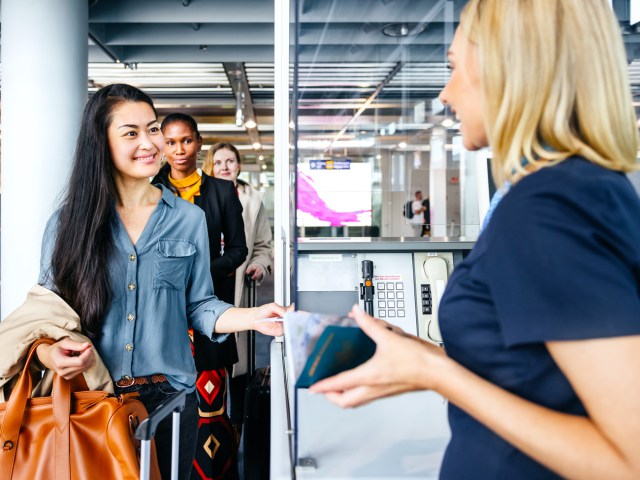One of the most important steps of the air travel process is identity verification — for everyone’s safety, the airline and TSA officials need to make sure it’s really you boarding the plane. With that in mind, a growing number of airports in the U.S. and worldwide are experimenting with facial recognition technology, which aims to make the verification process more secure — and potentially cut down the amount of time this step of the security process takes. So, how does it work? And can you opt out over privacy concerns? Here’s what you need to know about using facial recognition at airports.
How Facial Recognition Technology Works

At airport security checkpoints enabled with facial recognition technology, eligible travelers will have their photo taken to verify their identity, in addition to presenting their physical form of identification. The software matches the image taken of the traveler to their passport or license to ensure it’s really them traveling. The traveler’s photo is then deleted shortly afterward, according to the TSA. The technology has potential benefits not only for checkpoint efficiency but also for tightening security. “It’s the future because it’s so much more effective than a manual comparison. This is better for security,” TSA administrator David Pekoske told CBS News.
Where Facial Recognition Is Available

After being introduced in 2019, facial recognition technology is now available at TSA checkpoints at more than 30 airports in the U.S. In the future, the TSA says it hopes to expand the technology to 400 more airports nationwide. The technology isn’t just being used at standard preboarding security checkpoints, either. U.S. Customs and Border Protection says more than 230 border checkpoints in additional U.S. airports — where passengers pass through after international flights — also utilize facial recognition.
What Is Touchless ID?

For now, travelers will still have to present their physical ID in addition to having their photo taken. But the TSA is trialing a program for TSA PreCheck members, in partnership with several airlines, called Touchless ID. It works by having travelers submit scans of their identity documents to the airline’s app; the software then compares the photo taken at the security checkpoint with the scanned document the traveler has already uploaded. Participating airlines allow travelers to use the technology for check-in and bag drop-off, too, which could be a big time-saver at the airport.
Delta, which calls its version of the program Delta Digital ID, is available only to members of its SkyMiles loyalty program who have a U.S. passport and are also enrolled in TSA PreCheck. Travelers will need to opt into the program by adding the Known Traveler Number that comes with PreCheck enrollment on the airline’s website or app. As of mid-2024, the pilot program is available at Delta’s hubs in Atlanta, Detroit, Los Angeles, and New York (both JFK Airport and LaGuardia).
United Airlines’ Touchless ID is available to customers who have TSA PreCheck. Eligible travelers can access the technology to make use of the airline’s bag drop shortcut, and won’t need to show their boarding pass or physical ID at the checkpoint or to board the plane. As is the case with Delta, these touchless checkpoints are available only at select airports as of 2024, including Chicago, Los Angeles, and Newark.
Can You Opt Out of Facial Recognition?

In short, yes. The TSA states, “Travelers who do not wish to participate in the facial recognition technology process may decline the optional photo, without recourse, in favor of an alternative identity verification process, which does not use facial recognition technology to verify their identity.”
All you need to do is notify the TSA officer or airline employee before your picture is taken and request the standard verification process. Then, agents will manually check your passport or other form of government identification, as well as your boarding pass (though the TSA is also expanding a program where travelers don’t have to show their boarding passes).
However, there’s an important caveat: The U.S. Customs and Border Protection says that only U.S. citizens and permanent residents can opt out of having their picture taken at border checkpoints upon arrival after an international flight. All other international travelers will need to have their picture taken at checkpoints where facial recognition technology is enabled.
More from our network
Daily Passport is part of Inbox Studio, which publishes content that uplifts, informs, and inspires.
















